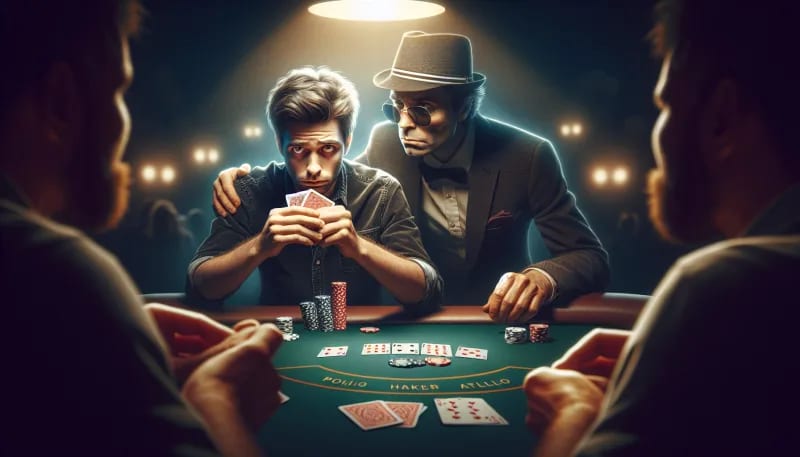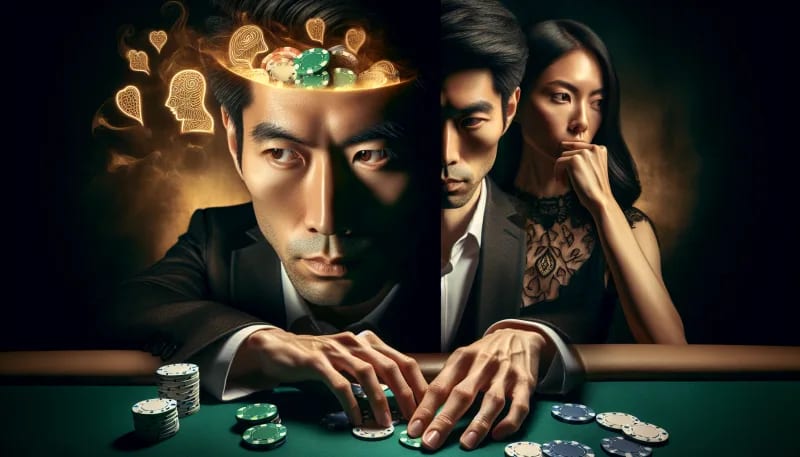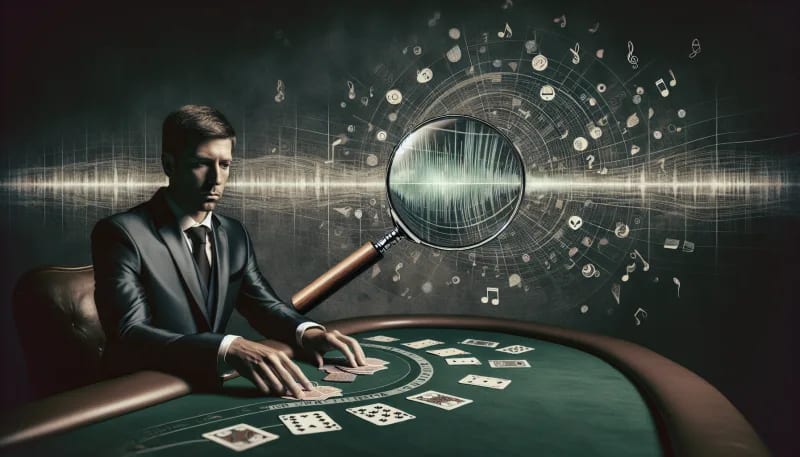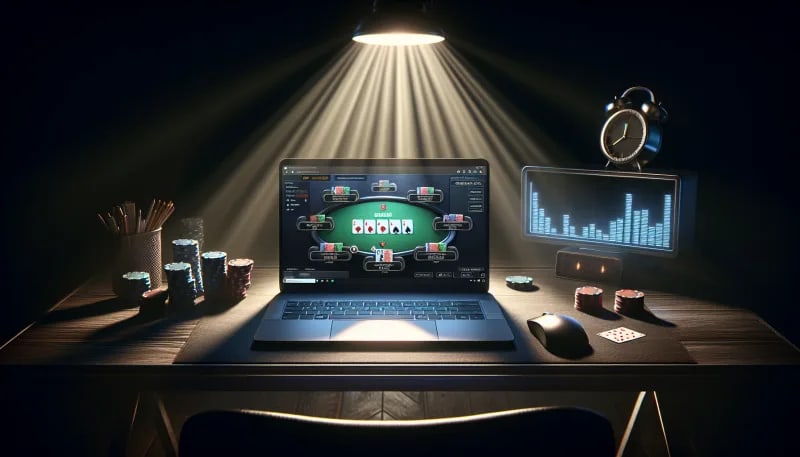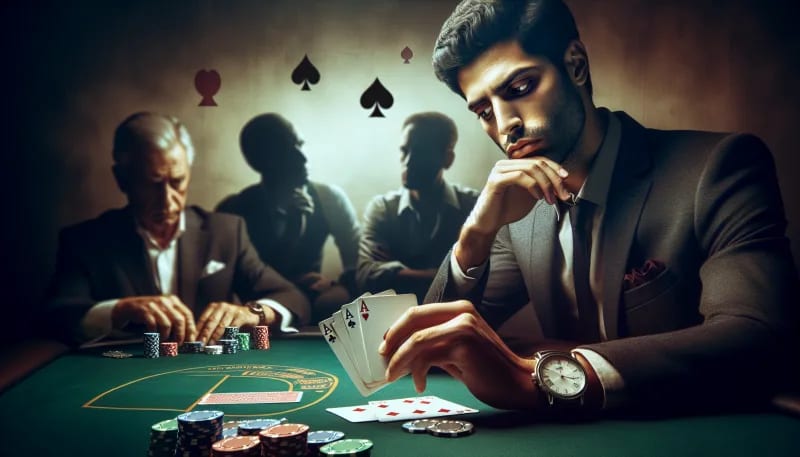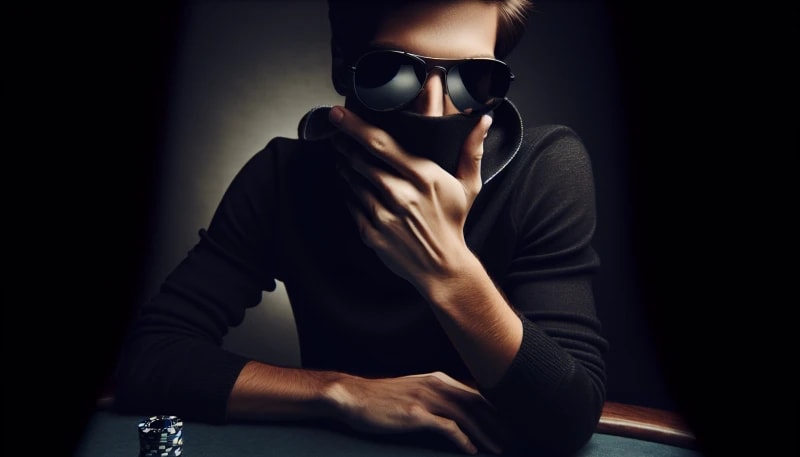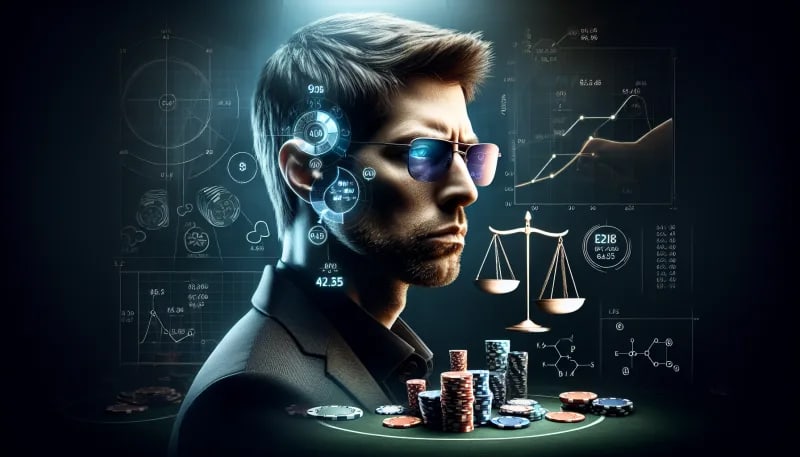Poker Tells: Advanced Strategies for Reading Your Opponents
Introduction to Poker Tells
Ever watched a tense poker scene in a movie and seen players trying to read each other’s faces? They’re looking for poker tells. But what exactly are these? Let's dive in.
Tells are the non-verbal cues or habits that players exhibit during a hand, often without realizing it. They can range from a subtle twitch to a repetitive bet sizing pattern. Why care about them? Because they can be incredibly revealing. Imagine knowing if your opponent is bluffing or holds the nuts just by observing their behavior.
Take a moment to think about it. How powerful would it be to decipher your opponent's hand strength without them saying a single word? That's the magic of tells. They let you peek into your opponents’ minds, providing clues to make more informed decisions.
I always say, poker is a language. Every raise, fold, or check tells a story. Tells add depth to that story, giving you glimpses of the true narrative. Your objective? Become fluent in this silent dialogue.
Here's a tip: tells aren't about seeing one twitch and jumping to conclusions. It's about spotting patterns and inconsistencies. Is your rival suddenly acting differently when they have a strong hand versus a weak one? These are the breadcrumbs that lead you to make more educated plays.
Tells take many forms. They can be physical like a shaky hand or a forced smile, or behavioral such as betting speed or patterns of speech. The crucial part is learning to identify and interpret these nuances. That's where the upcoming section ‘Psychology Behind Tells’ ties in.
Understanding the psychology that drives these involuntary signals? It's what elevates your game from good to great. You begin to see the unspoken truths of the game. Ready to delve deeper and dissect the mind behind the mannerisms? Let's move on to the psychology behind tells and unlock another layer of this complex, captivating game.
Psychology Behind Tells
In the last section, we scratched the surface of poker tells. But why do they matter? Let's dive into the psychology behind them.
At its core, poker is a game of incomplete information. We pick up clues to fill those gaps. Why do players exhibit certain behaviors, though? It's often unconscious. Stress, excitement, or even the mental load of deception triggers physical responses.
Humans are fundamentally nonverbal communicators. Our bodies speak volumes, often betraying our true intentions. Think about it: ever noticed someone tap their foot impatiently? It's like that, but with higher stakes.
So, I focus on microexpressions. These fleeting facial tells are involuntary, revealing genuine emotion under the poker face. Spotting them requires keen observation and practice. Can you recall a time when someone's quick smirk tipped you off? That's the power of psychological understanding at play.
Understanding the psychological cues at the poker table can be a game-changer. It's not just about reading others, but controlling our own tells. Are we accidentally signaling our bluff? It's time to be honest with ourselves.
Players often exhibit defensive or protective gestures when weak. They might cover their mouth or eyes, a subconscious shield against their vulnerability. Conversely, they may become unusually still or hyper-focused when strong.
Dominance and submission play out in real-time as well. An opponent may assert dominance with direct eye contact or chip handling, trying to intimidate. Meanwhile, perceived submission might be a sign of strength, luring opponents into a false sense of security.
In the next part, we’ll delve into 'Common Physical Tells.' Understanding these can be the key to deciphering the psychological chess match. Ask yourself: Am I ready to gain that edge?
Common Physical Tells
Building on the psychological framework we discussed, it’s time to delve into the nitty-gritty of physical tells. Ever wonder why some players wear sunglasses indoors? I'm here to let you in on the secret signals everyone's body gives off, whether they know it or not.
Facial Expressions: They're the billboards of the mind. For instance, players who catch a glimpse of a strong hand might briefly flash a smile. I call it the 'fleeting smile.' It's your clue that they might be holding some serious power. Conversely, a furrowed brow might indicate confusion or dissatisfaction with their hand. Got that?
Hand Movements are incredibly telling. When someone’s fingers tremble as they reach for chips, it’s often a sign of excitement or nerves. Strong hand? Maybe. Bluff? Possibly. Watch closely how they handle their cards or chips — inconsistency can be a treasure trove of information.
Now, consider posture. See a player sit up suddenly? They're likely interested in the hand. Leaning in can show eagerness or confidence in their cards. But slump back into their chair, and they might just be signaling defeat or disinterest. Posture is a silent announcer of a player's current standing.
What about those who cover their mouth or touch their face after betting? It could be a subconscious attempt to hide reactions or deceive opponents.
Ever witnessed a pulse throbbing in someone’s neck or temple when they’re in a big hand? High stakes, high stress. Such involuntary responses can betray the calmest demeanors when the pressure mounts.
So, these tips are nothing without application, right? As you weave through the dance of chips and cards, remember to connect the dots. Are the hand gestures consistent with the stakes? Does the facial expression align with the betting pattern?
Keeping an eye out for these signals will give you an edge. But beware — the tables turn when you're the one under scrutiny. Are you ready to remain unreadable when the spotlight swings your way?
As we move on to 'Verbal Tells and Pattern Recognition,' consider how language plays into this delicate ballet of bluffs and bets. Could what players say (or don't say) reveal just as much as their body language? Stay tuned.
Verbal Tells and Pattern Recognition
Preceding the handshake or the nervy leg bounce, verbal tells sit on the more intricate end of the poker tell spectrum. You've seen them—those moments when a player's words betray their cool demeanor. It's all in how they say it.
So, how does one decipher the verbal jigsaw? Listen for changes. A player who's been chatty then suddenly clams up after a bet could be as telling as a cornered bluffer. What about the one who raises their voice just so, trying to intimidate? It could be a sign of overcompensating for a weak hand.
Speed is another giveaway. Does someone answer quickly, perhaps too eagerly? They might have been waiting to pounce with a strong hand. On the other hand, a delayed response often screams indecision. It's a fine line – and recognizing that line is crucial.
I find pattern recognition plays a mighty role. It's about picking up on habits. People tend to repeat certain phrases when they're confident and others when they're not. Ever caught someone repeating, "I guess I'll call," when they're less than sure? That's a pattern. That's your clue.
Humor me for a second—think about it. Do you remember a time when the voice didn't match the action? A shaky "I raise" that didn't quite line up with the mountain of chips pushed forward? That's the mismatch that needs to become your beacon.
As we shift from the physicality of tells to the digital realm in the next section—'Online Poker Tells'—remember this: The pitch and timbre of a voice can't hide behind a screen, but patterns often emerge in chat boxes and betting timings. Keep those ears sharp and eyes peeled for those digital echoes of uncertainty, or the bold punctuation of confidence.
Transitioning from physical to verbal cues and onto digital tells is like piecing together a puzzle. Each tell is a fragment; put them together, and the picture becomes clear. So, train those ears to listen, not just hear, because in the symphony of poker verbiage, every note matters.
Online Poker Tells
As we pivot from the verbal cues and pattern recognition discussed earlier, let's talk about the online poker realm. Think physical tells don't translate to the digital felt? Think again. Online poker tells are more subtle but just as revealing.
Betting patterns are your bread and butter for sniffing out bluffs or strong hands. Players who consistently raise on certain flops might be showing a pattern. Are they overly aggressive with possible straight draws? Noticing these habits provides crucial insight.
Timing is key. A quick bet often suggests a strong hand, as the player likely knew they would bet regardless of the action in front of them. Conversely, a delay followed by a bet might indicate a weaker hand or a bluff. It's the online equivalent of a player hesitating before moving their chips in a live game.
I pay special attention to the size of bets relative to the pot. An unusually large bet can scream, "Stay away!" But is it a genuine warning, or are they overcompensating for a weak hand? On the flip side, a smaller-than-expected bet could invite calls, either to build the pot with a monster hand or to steal with a cheap bluff.
Quick to check; a habit to suspect? Absolutely. Instant checks often signify auto-check enabled or a lack of interest in the pot. This can signal a range of hands but typically veers towards the weaker spectrum.
Ever seen someone take the same exact amount of time to make every decision? That's likely a player using the time-bank feature consistently to mask their tells. Smart, yes, but also a pattern in its own right.
After digesting these digital tells, you're probably wondering: how do we throw opponents off the scent? We intentionally give off "tells" to mislead. The art of misdirection takes these tells and flips them on their head. Fascinating, isn't it? Stay tuned as we delve into the Misdirection: Intentional Tells next, where I'll reveal how to turn deception into your ace in the hole.
Misdirection: Intentional Tells
In the realm of poker, as we transition from the digital cues discussed in Online Poker Tells, let's delve into the psychological battleground where players often employ misdirection. Have you ever considered that a player might intentionally scratch their nose or glance at their chips not out of habit, but as a ruse? It happens more than you think.
Experts at the table love to play mind games. They drop breadcrumbs – false tells – hoping you'll follow their deceptive trail. Spotting these is tricky, but not impossible. Watch for inconsistencies in their behavior when they have strong or weak hands. Does their shaky hand always indicate a monster hand, or are they overacting?
I've learned this the hard way: Don't take every tell at face value. If a player's actions seem exaggerated or timed like a staged performance, it could be a trap. Your best bet? Gather intel over several hands to determine a pattern. Remember, authenticity tends to be subtle, while deception screams for attention.
Incorporating this tactic yourself isn't just fun; it's strategic. Start small - maybe deliberately stare at the flop longer than necessary when you're holding a strong hand. The goal? To embed doubt in your opponents' minds. But beware, the line between a cunning ploy and a transparent bluff can be thin. Are you calibrated enough to walk it?
Imagine the edge you'll have once you can reliably trade false breadcrumbs while concealing your own tracks. As we segue into the next section, Learning to Mask Your Own Tells, think about combining these strategies. Could mastering both not only boost your deception game but also reinforce your poker “poker face”? I’d bet on it.
Learning to Mask Your Own Tells
Ever caught yourself practically shouting your hand with a twitch or a smirk? I sure have. But fret not! With practice, you can cloak those giveaways like a pro.
First thing's first: Relax your face and jaw. Tension is a neon sign flashing your emotions. Practicing in the mirror helps. Notice any flinches or eyebrow raises when you bluff or hit a strong hand? Smooth those out.
Now let’s talk about the eyes. They're the windows to your soul, right? When playing, fix your gaze on a spot on the table or look consistently at your chips or cards. And sunglasses? A useful accessory, but don't rely on them. They’re like training wheels; eventually, you'll need to ride without them.
Controlling your breathing is also critical. Ever hear about meditation? It's not just a fad—it's a tell-taming technique. Practice slow, deep breaths. It steadies your nerves and keeps your shoulders from bouncing like a stock ticker.
Body language next. Are you a knee-jiggler or a chip stacker when agitated? Find your default stress poses. Then, train to adopt a neutral position—hands on the table, relaxed posture, minimal fidgeting. Consistency is key. If you always hold your cards the same way, there's less chance of slipping up.
Can you speak without saying a word? Count on it. Vocal tells are a thing. The solution? Simple—speak with an even tone or don't talk at all during crucial hands. Banter can wait.
Link this to deception from the previous section—sometimes throw in a controlled “tell” to build a deceptive image. It’s a nifty bridge to the 'Advanced Analysis and Application' part—where you'll learn to flip the script and play the player.
Confidence comes with practice. And remember, masking tells isn’t about hiding who you are. It’s about hiding how you play. Now, clear your mind and steady your hands. It's time to be unreadable.
Advanced Analysis and Application
After mastering the art of masking your own tells, the next step is sharpening your ability to dissect opponents' behavior. Isn't it exhilarating to anticipate your opponents' moves just by observing them? This isn't just about spotting a shaky hand or averted gaze; at high stakes, it's about deciphering subtler cues and patterns.
Start with baseline behavior. Keep an eye on how players act under different circumstances. Are they talkative when holding strong hands or do they retreat into silence? Establishing these baselines can be a goldmine. Once you've got a read, your response can be finely tuned, allowing you to exploit their hand through strategic betting or folding.
But remember, poker is a game of incomplete information. Your analytical skills must be balanced with sound strategy. Rely too much on tells and you risk being outsmarted by players who are intentionally misleading. Rely too much on strategy and you might miss golden opportunities right in front of you.
Consider this: How might you blend acute observation with strategic play? Look for patterns. Consistency in behavior is more reliable than one-off tells. If someone has a tell you've spotted repeatedly, factor this into your strategic considerations.
Think about how potential tells can influence your pot odds and decision-making. For example, a player's delayed reaction might suggest uncertainty, which in turn might affect the odds you assign to their possible hands. Is this a chance to increase your bet or a signal to play cautiously?
Ultimately, it's a delicate dance between what you see and what you know. It's crucial to keep your strategy flexible, adjusting to new information as it unfolds. Always be ready to shift gears if your read on a tell turns out to be a clever ruse. Can you stay one step ahead?
In the high-pressure cooker of high-stakes poker, advanced analysis isn't just an advantage—it's a necessity. Temper your observational skills with robust strategy, and you've got the winning combo. It elevates your game from good to great, from player to legend.

